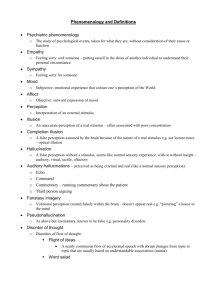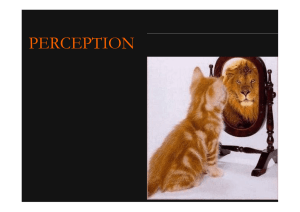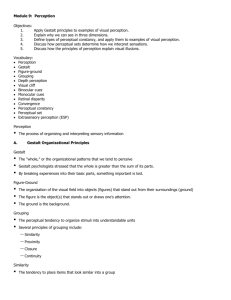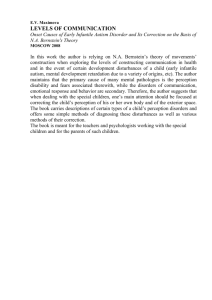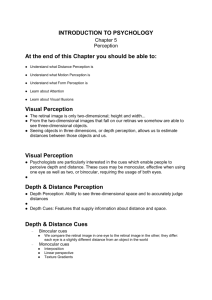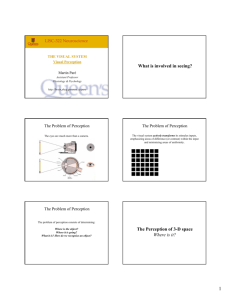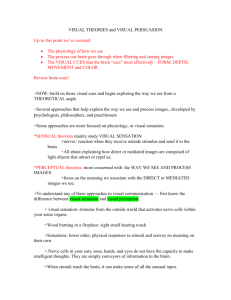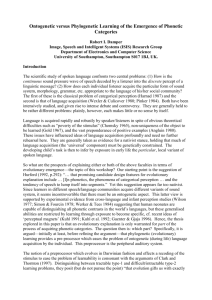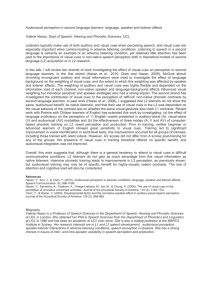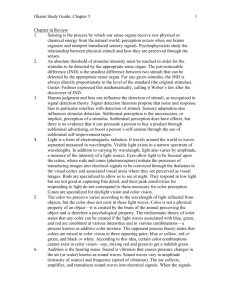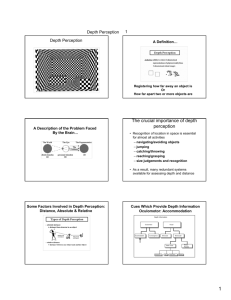Sensation – Key Learning Goals
advertisement
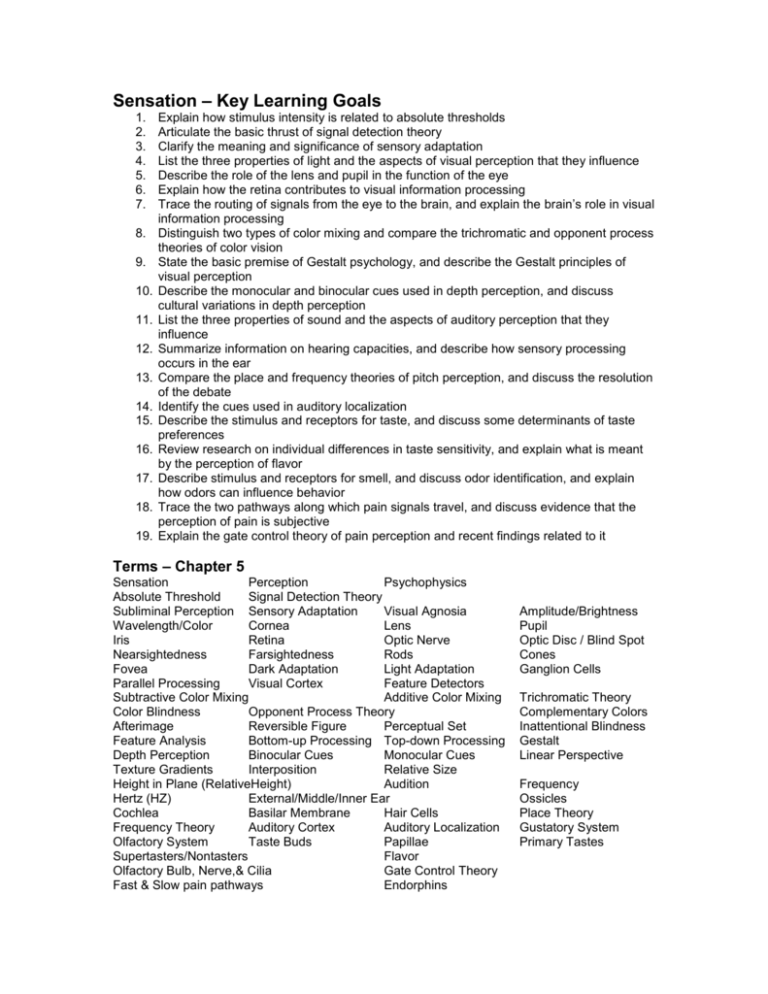
Sensation – Key Learning Goals 1. 2. 3. 4. 5. 6. 7. 8. 9. 10. 11. 12. 13. 14. 15. 16. 17. 18. 19. Explain how stimulus intensity is related to absolute thresholds Articulate the basic thrust of signal detection theory Clarify the meaning and significance of sensory adaptation List the three properties of light and the aspects of visual perception that they influence Describe the role of the lens and pupil in the function of the eye Explain how the retina contributes to visual information processing Trace the routing of signals from the eye to the brain, and explain the brain’s role in visual information processing Distinguish two types of color mixing and compare the trichromatic and opponent process theories of color vision State the basic premise of Gestalt psychology, and describe the Gestalt principles of visual perception Describe the monocular and binocular cues used in depth perception, and discuss cultural variations in depth perception List the three properties of sound and the aspects of auditory perception that they influence Summarize information on hearing capacities, and describe how sensory processing occurs in the ear Compare the place and frequency theories of pitch perception, and discuss the resolution of the debate Identify the cues used in auditory localization Describe the stimulus and receptors for taste, and discuss some determinants of taste preferences Review research on individual differences in taste sensitivity, and explain what is meant by the perception of flavor Describe stimulus and receptors for smell, and discuss odor identification, and explain how odors can influence behavior Trace the two pathways along which pain signals travel, and discuss evidence that the perception of pain is subjective Explain the gate control theory of pain perception and recent findings related to it Terms – Chapter 5 Sensation Perception Psychophysics Absolute Threshold Signal Detection Theory Subliminal Perception Sensory Adaptation Visual Agnosia Wavelength/Color Cornea Lens Iris Retina Optic Nerve Nearsightedness Farsightedness Rods Fovea Dark Adaptation Light Adaptation Parallel Processing Visual Cortex Feature Detectors Subtractive Color Mixing Additive Color Mixing Color Blindness Opponent Process Theory Afterimage Reversible Figure Perceptual Set Feature Analysis Bottom-up Processing Top-down Processing Depth Perception Binocular Cues Monocular Cues Texture Gradients Interposition Relative Size Height in Plane (RelativeHeight) Audition Hertz (HZ) External/Middle/Inner Ear Cochlea Basilar Membrane Hair Cells Frequency Theory Auditory Cortex Auditory Localization Olfactory System Taste Buds Papillae Supertasters/Nontasters Flavor Olfactory Bulb, Nerve,& Cilia Gate Control Theory Fast & Slow pain pathways Endorphins Amplitude/Brightness Pupil Optic Disc / Blind Spot Cones Ganglion Cells Trichromatic Theory Complementary Colors Inattentional Blindness Gestalt Linear Perspective Frequency Ossicles Place Theory Gustatory System Primary Tastes

